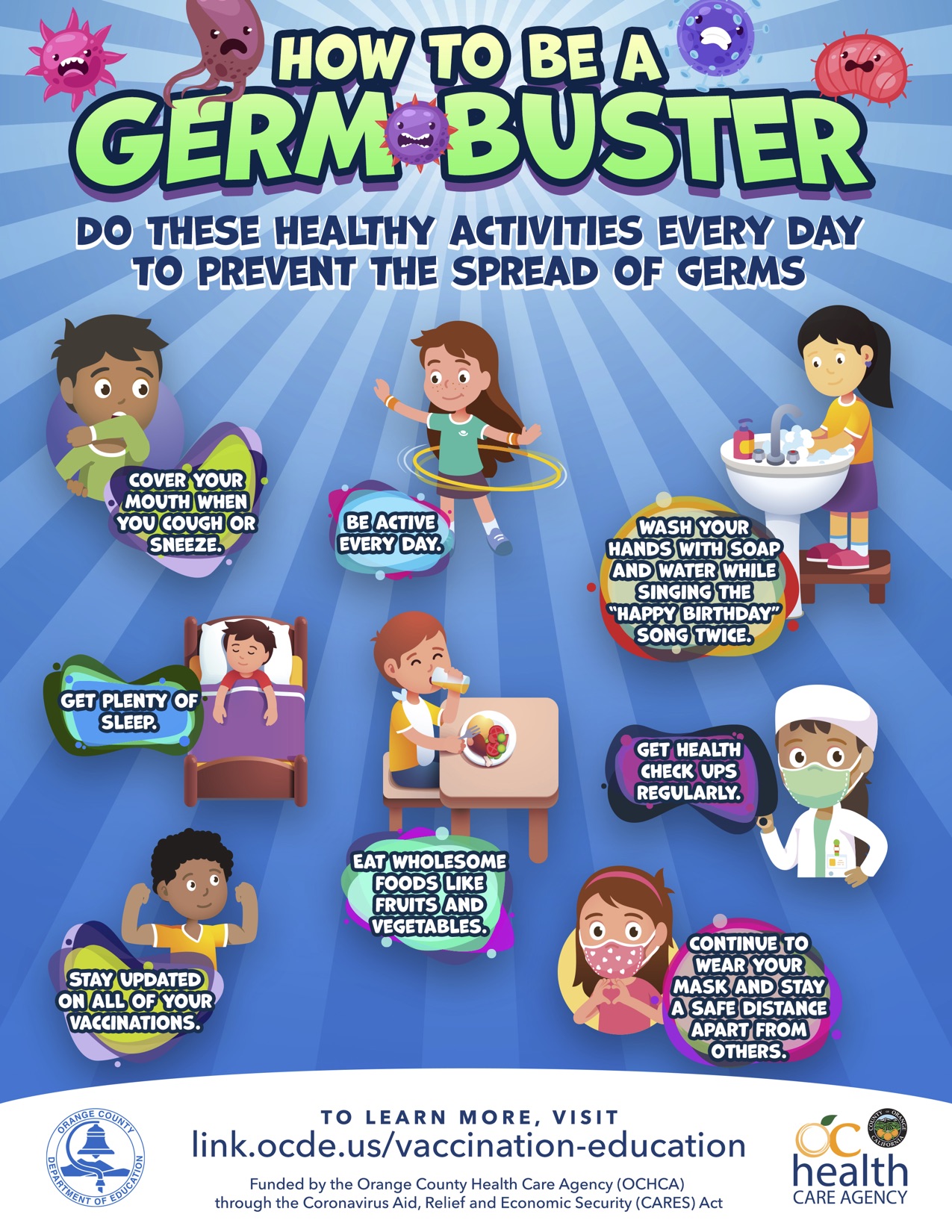OCDE has partnered with the Orange County Health Care Agency to produce a series of mini-lessons, activities and informational handouts on COVID-19 and the new vaccines intended to curb the pandemic.
The materials, which are divided by grade span, were developed by members of OCDE’s Educational Services team to equip educators with timely and accurate information to help students understand how airborne diseases and illnesses spread. Also featured are tips on keeping physically and mentally healthy and strategies for analyzing health information.

The content aligns with California’s Health Education Content Standards from 2008 and the state-adopted framework that helps teachers deliver standards-based lessons.
“These resources reflect state health standards that have long stressed the importance of personal hygiene, vaccinations and other strategies for disrupting and preventing disease transmission,” said Dr. Christine Olmstead, OCDE’s associate superintendent of Educational Services. “Now more than ever, we want to empower educators and students to understand how they can protect themselves and their families, and how we can all help end this pandemic and get life back to normal.”
Age-appropriate resources
For each grade span, there’s a mini-lesson, an activity sheet, a model learning activity and an age-appropriate student hand-out that comes in in six languages. For example, students in kindergarten through grade three can learn how to become germ-busters by engaging in the kinds of healthy activities that prevent illness.
Early elementary grades are encouraged to wash their hands frequently, keep active, eat healthy foods, get the right amount of sleep and make sure they get their routine immunizations. COVID-specific precautions are also taught, with lessons on the importance of face coverings and physical distancing during a pandemic.
In grades four through six, students can learn how to access and analyze health information — and determine which sources are credible. Terms like “COVID-19,” “virus” and “vaccine” are introduced and defined.
At the secondary level, the resources help middle school and high school students learn how to debunk misinformation and manage their stress and anxiety levels to build healthier and better-equipped immune systems.
Older students are encouraged to exercise daily, eat properly, get enough sleep, use a calendar to track tasks and embrace healthy hobbies. The informational sheets also refer to no-cost mental resources, including a text line to reach a crisis counselor.
To access OCDE’s vaccination resources, visit link.ocde.us/vaccination-education.
